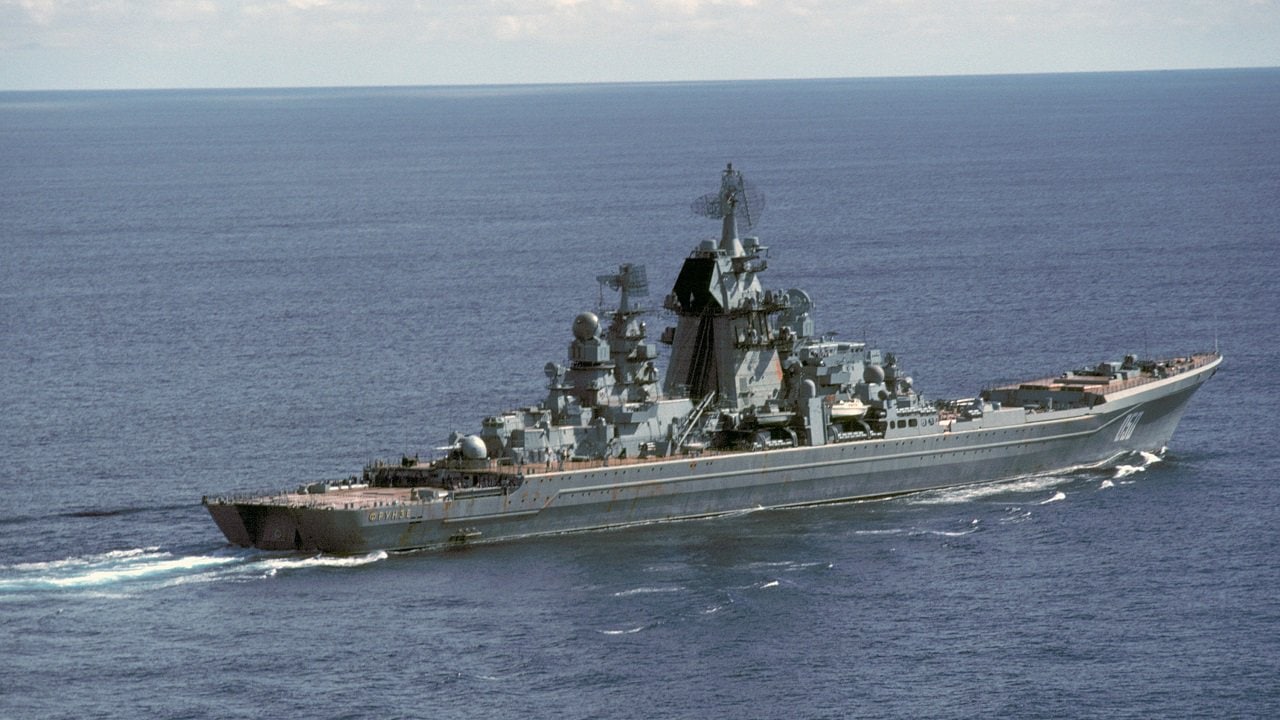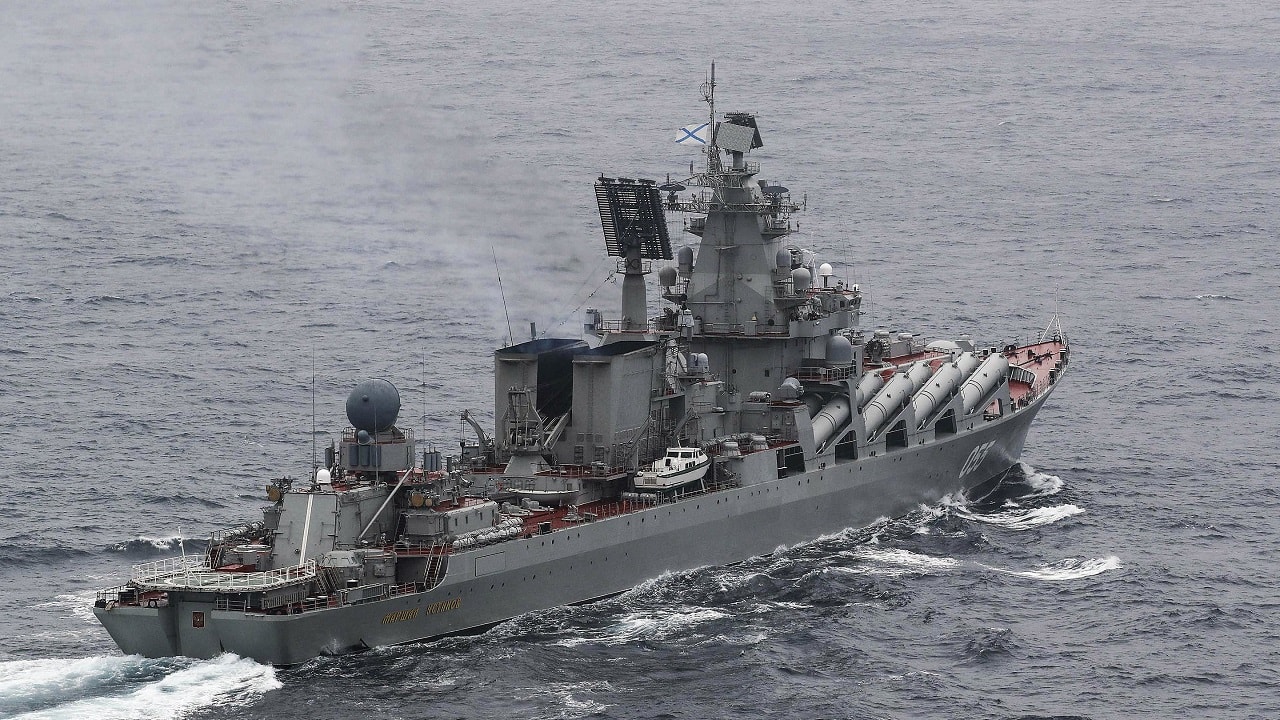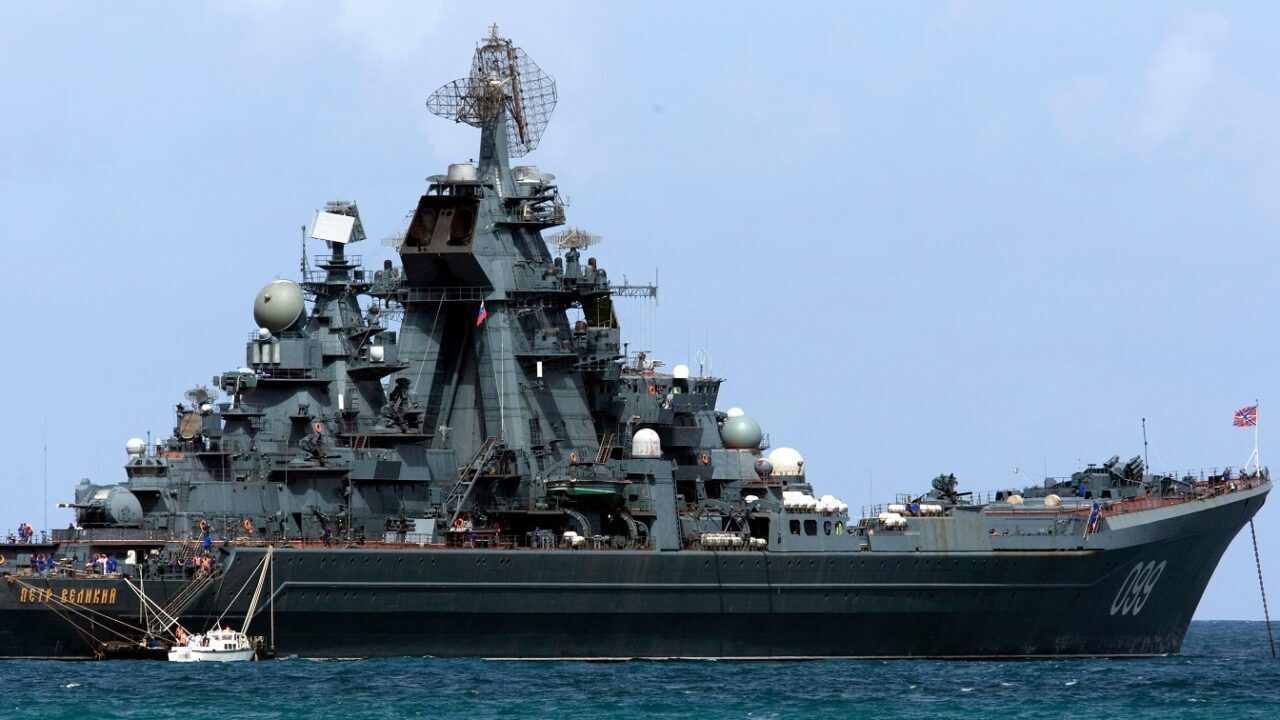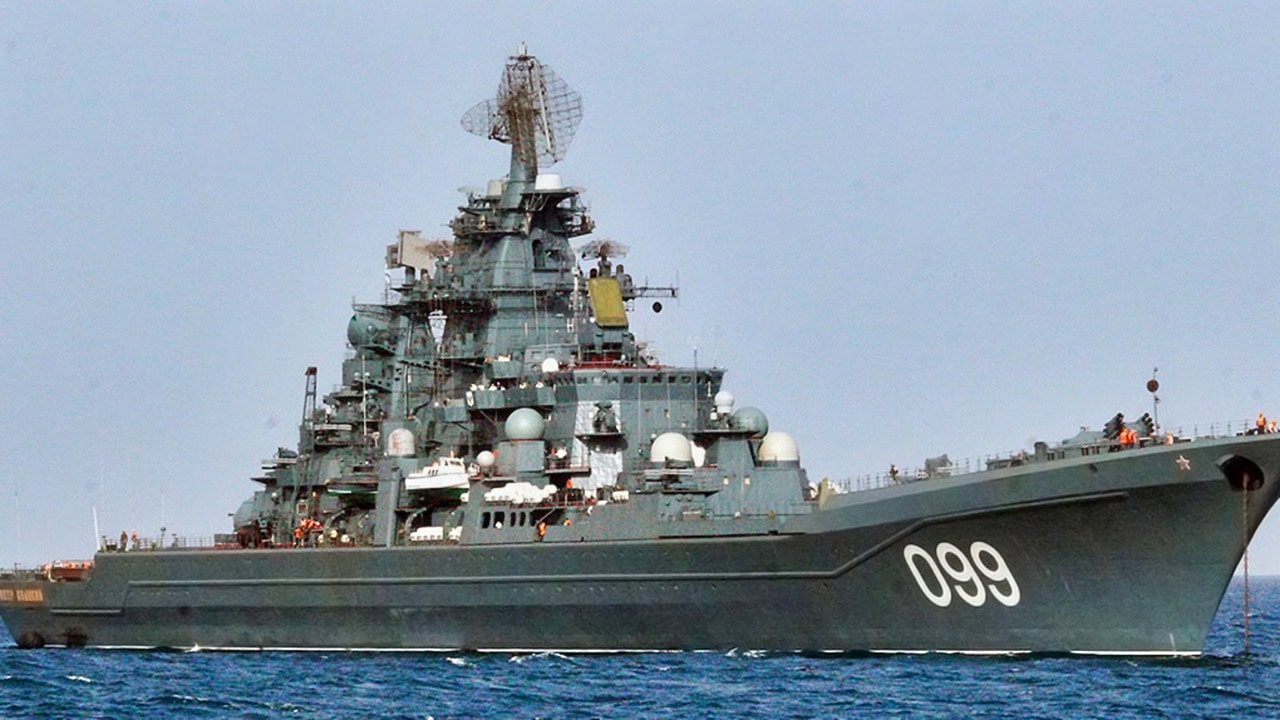The Russian Navy’s Nuclear Powered Kirov-Class Battlecruiser: Back in Action? Key Point: Though the Admiral Nakhimov’s two nuclear reactors have been recently reactivated, it might be some time before the enormous ship sees active service or goes on a deployment.
The Russian Navy’s Kirov-class battlecruiser, the Admiral Nakhimov, has recently undergone a significant part of its modernization process: turning on its pair of nuclear reactors. It is scheduled for sea trials in the summer of 2025.
The Great Kirov-Class Comeback? Not So Fast…
“Last Sunday, the second nuclear reactor was launched on the cruiser Admiral Nakhimov,” a source told TASS, a Russian state-owned news agency. “The agency’s interlocutor recalled that the first reactor was launched at the end of December 2024.
“It is specified that the sequential physical start-up of two reactors of the cruiser shows the readiness of the entire nuclear power plant of the ship for operation in all modes. Now the TARKR is at the wall of “Sevmash” of the United Shipbuilding Corporation. “The cruiser’s factory sea trials with its launch at sea will begin in the summer of 2025,” the source said.
“The cruiser has been under repair since 1999. Actual work on it has been underway since 2013. The main result of the modernization is a noticeable increase in the cruiser’s striking power. According to open sources, it will carry, in particular, 10 universal ship-based firing systems on 8 Kalibr-NK and/or Oniks cruise missiles each.”
In 2020, the Admiral Nakhimov left the Sevmash Shipyard after extensive refitting. As a part of that effort, the ship underwent an extensive overhaul.
“The cruiser had large units and hull constructions replaced and new insulation and cables installed. 3D modeling was used in the overhaul,” Naval News explained at the time of the refitting.
“The warship will now have life-support systems, radio-technical equipment, power supplies, missile and artillery arms replaced. The Admiral Nakhimov will have new tactical characteristics and will reinforce the surface fleet of the Russian Navy.”
The U.S. Navy’s Virginia-class Cruisers
The Russian Navy isn’t the only navy to have operated nuclear-powered combat ships.
The U.S. Navy’s Virginia-class cruisers, commissioned between the mid-1970s and early 1980s, were among the few nuclear-powered cruisers in the U.S. Navy at that time aside from aircraft carriers.
Thanks to their nuclear propulsion, the Virginia-class could keep pace and escort other nuclear-powered aircraft carriers and did not need to make numerous port calls to refuel.
Despite their advanced capabilities and the very long range afforded by their nuclear propulsion, the Virginia-class cruisers faced several shortcomings. The elimination of their helicopter hangar reduced their anti-submarine warfare effectiveness.
In addition, their nuclear propulsion proved to be more costly than conventional propulsion when refueling, disposal, and scrapping were accounted for, and this led to their decommissioning far earlier than initially planned.
Into the Future for Kirov-Class…or Not?
Given Russia’s ongoing challenges and delays with large defense projects, including naval initiative, it is uncertain when — or if — the Admiral Nakhimov will become fully operational.
The ship has been under some form of repair or modernization since 1997 and has spent more time at port than underway at sea.
Combined with Russia’s current defense priorities, that is, prosecuting the ongoing war in Ukraine, and directing the majority of their resources to that end, what the future holds for the Admiral Nakhimov is uncertain.
While the reactivation of Admiral Nakhimov’s reactors is a significant step toward reactivation, it will still be some time before that ship is prepared for deployment, if ever.
Kirov-Class Picture Essay

Kirov-Class. Image Credit: Creative Commons.

Aerial starboard quarter view of the Soviet Kirov-class guided missile destroyer FRUNZE underway back in 1985.

From Russian Navy. Helicopter of Russian cruiser Marshal Ustinov (Russian: Маршал Устинов) Marshal Ustinov is a Slava-class cruiser laid down in 1978, launched in April 1982 and commissioned in 1986. The Russian name for the ship type is Gvardeysky Raketnyy Kreyser (GRKR), meaning “Guards Missile Cruiser”. She is named after Dmitriy Ustinov, a former Soviet Minister of Defence. Designed as a battle cruiser, the Slava Class is smaller and less expensive than other ships, which demonstrate similar capabilities. The design integrates the P-500 Bazalt missile, which is a conventional alternative to the missiles installed in the Kirov Class battle cruiser. A crane is installed on the ship (visible between the two smoke stacks) for handling boats, while anti-ship missiles fitted on either side of the superstructure provide it with a typical appearance. The vessels have poor damage control capabilities due to flammable materials used in the structure.

Kirov-class Battlecruiser. Image Credit: Creative Commons.

Kirov-Class Battlecruiser. Image Credit: Russian Navy.
About the Author: Caleb Larson
Caleb Larson is an American multiformat journalist based in Berlin, Germany. His work covers the intersection of conflict and society, focusing on American foreign policy and European security. He has reported from Germany, Russia, and the United States. Most recently, he covered the war in Ukraine, reporting extensively on the war’s shifting battle lines from Donbas and writing on the war’s civilian and humanitarian toll. Previously, he worked as a Defense Reporter for POLITICO Europe. You can follow his latest work on X.

